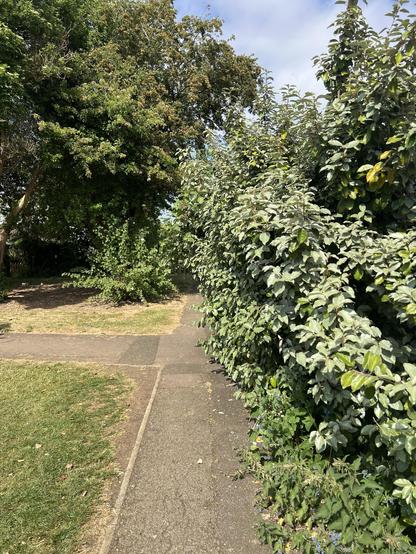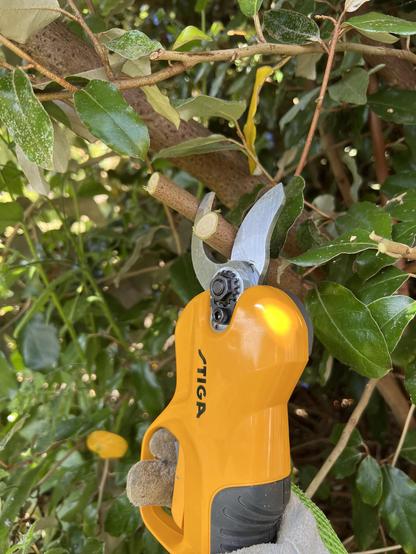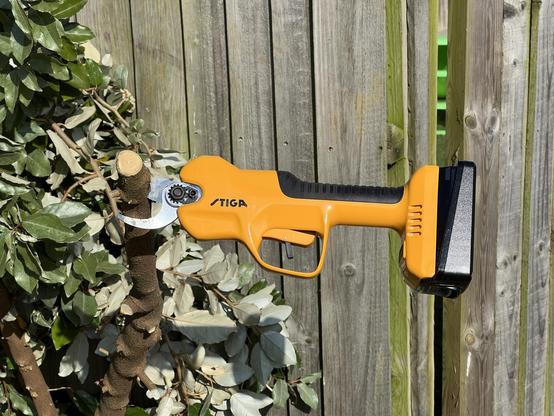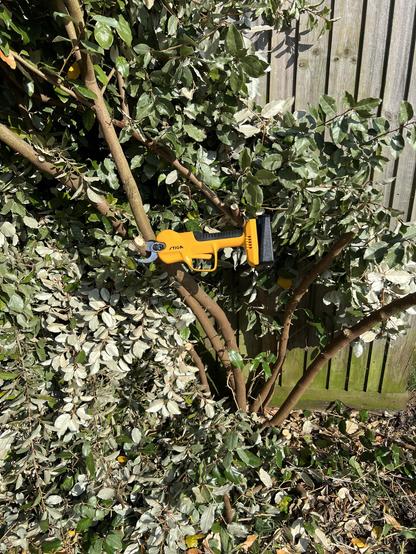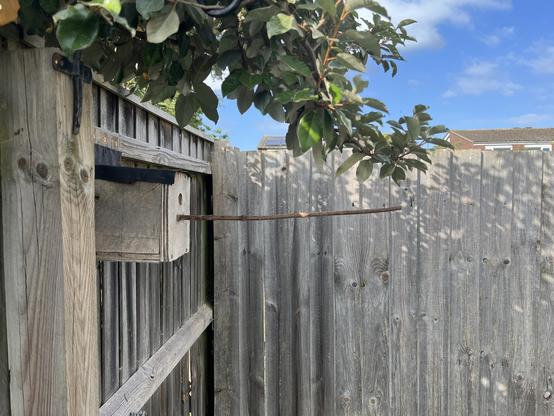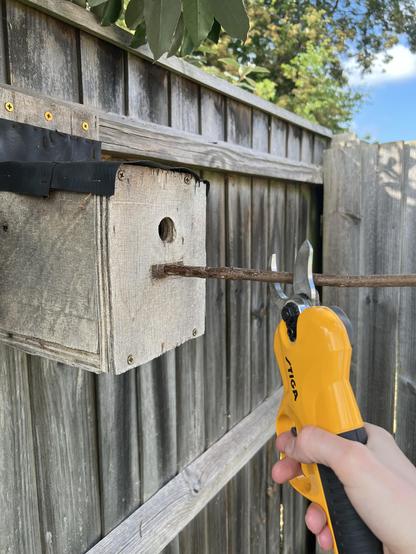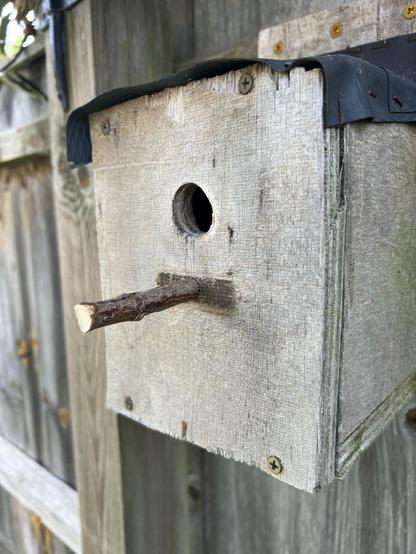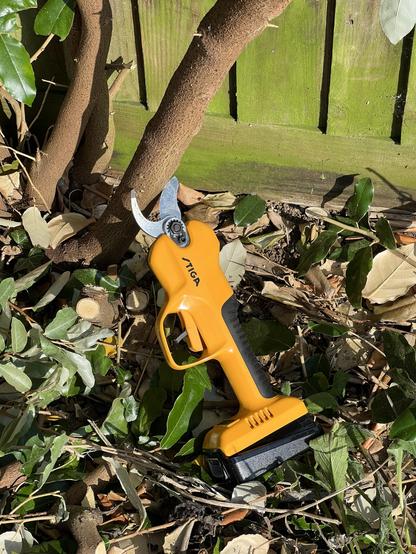STIGA SC 100e Cordless Pruning Shears
I’m going to level with you, this is kind of a father’s day tie in. You might think “an electric pruner is a weird thing to buy your dad,” but here I am – a dad – getting excited about an electric pruner and sharing my adventures with you. It should be noted, too, that I no longer have a dad of my own to borrow power tools from and haven’t for quite some time. If you find this time of year hard- well then I’m right there with you. On the bright side, I do have a father in law (ostensibly) to loan them to.
Doom and gloom aside there’s something inherently validating about owning power tools, especially a plurality of them. They’re the hallmark of someone who’s put together and prepared. This is important to me because I am neither. I am, however, not immune to the immense satisfaction of tackling a job in the most over-engineered way possible.
For a gardening tourist like me, electric pruning shears are the apex of overengineering. I don’t even own regular shears, opting instead borrowing a pair, donning thick gloves, any applying a liberal dose of determination. This has resulted in some gardening tasks spiralling somewhat out of control, and like any consummate dad I am reluctant to pay a professional to do something I can do perfectly terribly by myself.
So when I say STIGA’s SC 100e cordless pruning shears excite me, I don’t mean in an abstract playing-it-up-for-the-crowd sense. I mean I am sincerely looking forward to showing my neighbours I’m capable of adult tasks… instead of, y’know, spray painting Shadow The Hedgehog on my door.
Regrettably (or perhaps fortunately?) I’m not a gangster. Just a guy who’s let a hedge, tree, bush, shrub? Get wildly out of control.
What’s more, these tools emerged from a fortuitous turn of events. I was researching them only recently (Flawless Cleaning Services (YouTube) garden cleanups had clued me in to their existence) when STIGA’s marketing folks dropped into my inbox with a robot lawnmower as a father’s day gift (sheesh I want to be that dad). Robot lawnmowers are both awesome and terrifying, emphasis on the latter. My lawn, regrettably, is artificial. Inherited from the previous homeowners, I hasten to add, and not a crime against nature that I have personally perpetrated.
With no real excuse to unleash a bladed robot on my garden (my Robot Warring friends would be ashamed of me) I had free reign of STIGA’s website for something suitably fatherly to write about. I chose the SC 100e Cordless Pruning Shears and the rather more dicy PR 100e Cordless Pruning Saw.
The former I needed urgently. The latter… maybe not so much (note: I would quickly eat these words). They feel right as a pair, though.
Right out of the box the SC 100e is surprisingly large, well packed and well built. It came in its own hard plastic carry case, which fits the tool itself, the battery and the charger. As something that’s equal parts fascinating and absolutely lethal to my kids it’s handy to have a container I can lock closed. The blades are also covered by a plastic shroud which is just tricky enough to remove that it offers some additional protection- though I have formed the habit of powering off the tool blades-closed just to be extra safe.
Got a new toy! Reservoir Dogs remake, anyone?
The body seems to be a hard plastic, though it arrived cold to the touch and felt deceptively metallic. Traces of plastic injection moulding flashing around the ventilation holes was a dead giveaway though. There’s a rubber grip for handling and a large, guarded trigger with a lockout lever. I’d tell you how it feels to use, but though gloved hands it’s impossible to tell. Even without the battery it’s fairly hefty and with the battery in place you’re hefting around a kilogram of tool- trading nimble pruning sheers for a hulking beast.
That hulking beast proved to be ruthlessly efficient, though. Armed with gloves, the SC 100e and a rush of ADHD-fuelled stubborn determination I started to tackle the bush/tree behind our back fence. It had grown quickly and wildly out of control, blocking our (never really used and jammed shut) rear gate and overhanging the public footpath. Sorting it had been on my TODO list for a year or so, since my previous attempts failed to anticipate just how quickly it would bounce back.
The shears absolutely tore through it, cutting almost anything the blades would fit around and – with more stubbornness and a little repositioning – even cutting thick branches that the blades would stick in on the first try. I’m not sure it’s a recommended use of the tool, but attacking a thick branch from multiple different angles eventually got the blades through.
Uh okay maybe this branch was a little too thick…
In short order I no longer had a bush problem and had a “good grief, how will I get rid of all these branches?” problem.
The shears also made short work of cutting things down to a manageable size. Though with too much to squeeze in my green bin I opted to chop everything down and squeeze it behind the remaining, too-thick-to-cut branches jutting from the ground. I’ll cram the leftovers into my bin over the coming months a
Surprisingly the weight was never a problem and generally neither was the size. Getting the blades close to the ground to snip off branches at the base was easy. The same applied to getting close to each branch to avoid leaving behind any nasty pointy bits for passers by to snag themselves on. The shears made such laughably short work of everything that the manual process of regular shears or a set of loppers would have tired me out much sooner, regardless of how much more light or nimble they might be. Having pruned manually the first time around – and having nature make a mockery of my efforts – I’ve absolutely no desire to try again.
Despite mild tomfoolery these really did make short work of most branches.
While chopping the cut branches down to size I managed to jam a small branch behind the trigger, causing it to jam the cutters closed. It was quickly resolved, but the trigger design could certainly benefit from a little refinement. It juts out from the body of the shears leaving a recess behind for something to stick into. During my whole attack on the bush, and all the chopping afterwards, this only happened once.
More often than not I also found my finger would rest on the trigger with the safety engaged. This left me firing the cutters absent mindedly as I hauled branches- the little zzt zzt sound is satisfying. As long as nobody runs up and inserts a finger this is unlikely to be a major problem. Nonetheless the safety feels ever so slightly redundant and isn’t present on many other brands of shears. If I’m going to lop a finger off – I somehow managed not to – I’ll probably do so regardless of tool design.
At one point I thought the battery had run out, but they’d just shut down automatically while I was lugging branches to and fro. The manual says the shut down time is 1 minute, which – since it only shut down once during my whole job – is a damning indictment of how much I was unnecessarily pressing the trigger.
I did prune down the little bird perch I added to our wayward birdhouse (the one screw holding it up had rotted out over winter and it fell on the ground). Drilled a hole and found a branch to friction fit and cut to a reasonable length. I’m probably a bit late for this season…
Without charging the battery lasted me through the entire pruning job, then got swapped into the chainsaw for a few larger cuts. The battery certainly outlasted my appetite for gardening, and since both the saw and shears share the same battery system I have more mileage than I’ll ever care to use. Apparently they’ll run for 90 minutes, or 2000 cuts. This implies cut every 2-3 seconds and I’d say that’s pretty ambitious for careful pruning.
Weirdly the charger for the SC 100e is bulky, with a compact power cord, contrasting the PR 100e charger which is compact with a bulky transformer. I’m not sure which I prefer, but they are completely interchangeable. I had a similar setup with my Bosch 12v tools, which came with interchangeable but wildly different styles of battery charger.
There’s a single button to power on/off the shears and choose the cutting width from one of three options- 15, 20 and 30mm. They operate so quickly that I just picked the widest and left it there. Long pressing the button turns them off, but doesn’t automatically close the jaws- you’ll need to hold the trigger to close them, then hold power off to shut off the tool in a closed position.
The elephant in the room for a tool like this is blade replacement or sharpening. At time of writing DIY Spare Parts has both blade parts in stock for just over £10 each, and also provide a full exploded diagram of the SC 100e detailing every part with easy add-to-cart links. Nonetheless the manual suggests you find an authorised service center to conduct the replacement. It doesn’t look complicated and you’ll know better than I if you’re up to the task or not.
They had their limits though, and I had to bust out the tiny chainsaw for the main branches.
Overall the STIGA SC 100e saved me a small fortune on gardening services and should serve me well keeping the tree under control. We’ll see how that pans out this time next year. If you have a similar seasonal task to tackle I’d recommend grabbing the SP 100e kit to save yourself the cost of a redundant charger and battery. For normal, respectable levels of garden upkeep it should be more than capable enough and can be snagged for £199 from a couple of legitimate looking online gardening shops (It may come as no surprise that I haven’t shopped at any of these…). The chainsaw is a little bit more spicy than the shears, though, and requires a bit more upkeep (and oil!) so I’d forgive you for finishing the thicker branches with a hand saw. Nonetheless, stay tuned for a separate review of the PR 100e!
